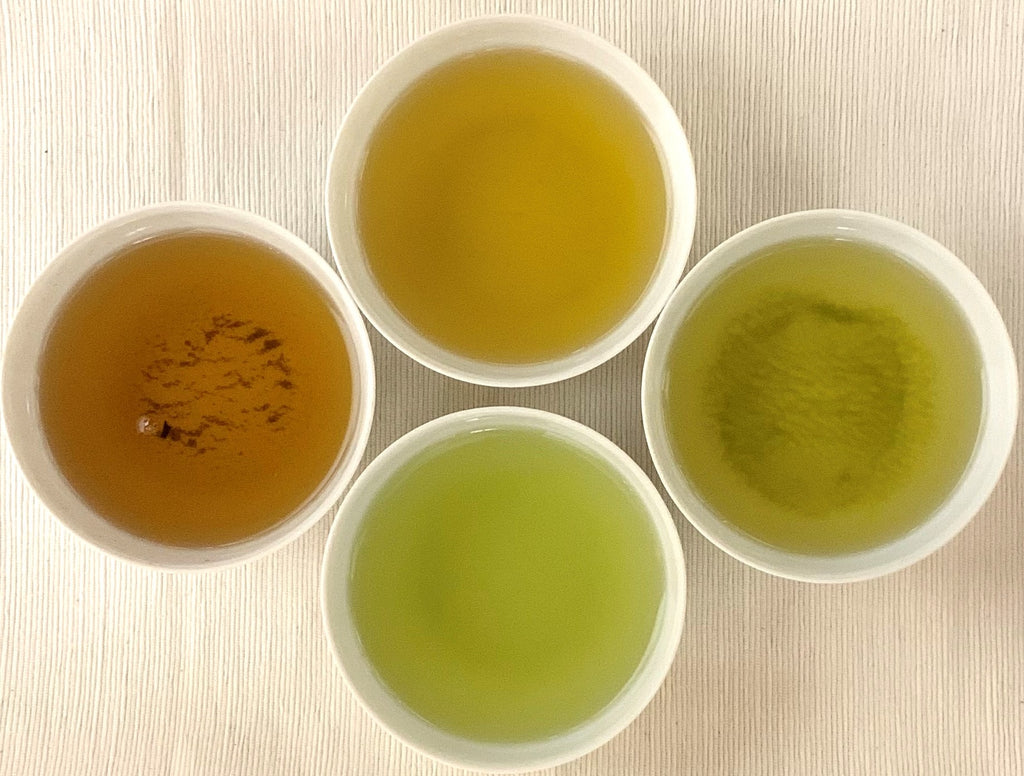The color and aroma of Japanese tea vary depending on the type of tea, but also greatly depending on how it is brewed. It not only entertain us, but also tell us a lot.
In this article, we will introduce the knowledge that you can enjoy drinking tea more in a delicious way if you know about such colors and aromas.
1. Natural compounds which generate green tea color and aromas
First, let's see the compounds what affect color and scent.
Elements that affect colors:
- Green Color : chlorophyll, Small fractions of tea leaves
- Yellow Color: Flavonol glycoside, Flavone glycosides
- Orange Color: Theaflavins
- Red Color: Polymeric catechins, Thearubigin
- Brown Color: Polymeric catechins, Oxidized polymers
Elements that affect aromas:
- Young leaves Scent : leaf alcohol, terpenes
- Dried Seaweed Scent: Dimethyl sulfide
- Lily of the valley Scent: Linalool
- Citrus Scent: Limonene
- Rose Scent: Geraniol
- Jasmine, gardenia Scent: Cis-jasmon
2. Differences in water color and aroma depending on the type and quality of tea
Next, let's dive deep into the differences in color and aroma of each type of green tea.
Deep steamed sencha (Fukamushi-cha) : The bright green color of deep steamed sencha is generated by suspension of small fractions of tea leaves. The darker this green is, the more mellow the taste becomes. In addition, tea leaves break into smaller pieces and become finer by being deeply steamed, which allows tea leaves to be heated well during the subsequent drying process. It generates a scent just like baked sweets, which is called “Hika” (literally fire aroma).
Light steamed sencha (Asamushi-cha) : Bright yellow is ideal color for light steamed sencha. With a small amount of catechin oxides contained, it adds a slightly reddish color into yellow water. For the aroma, good quality light steamed tea has well-balanced scent of fresh young leaves and flavor of hika. Some cultivars have additionally its own unique aroma, and others have a bit floral scent like rose or jasmine.
Gyokuro: The richer the content of chlorophyll, the more delicious the flavor of gyokuro becomes, and the water color of gyokuro becomes bluish. In addition, when it comes to the highest grade, the blue color of water becomes more transparent light blue called “Shiramizu” (literally white water). Gyokuro has a dried seaweed-like scent, and when it comes to high quality tea, it has a more fruity scent.
Hojicha: Hojicha has a brown color as it is roasted green tea. The higher the quality, the more reddish the color becomes, closer to reddish brown or reddish orange. The scent is more roasty than “hika” of deep-steamed sencha or lightly steamed sencha. It makes you feel relieved. Hojicha has one of the deepest world in terms of aroma, because it has so many options to make, such as which parts (leaves or twigs) are mainly used, whether the first flush or second flush to be used and how strongly roasted. It has more diverse than other teas.

